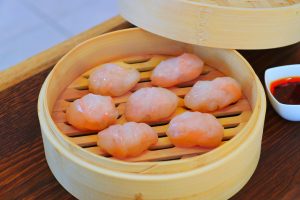
Steamed Ma Lai Sponge Cake Recipe (Ma Lai Gao)
Steamed Ma Lai Sponge Cake (Ma Lai Gao) has its roots in Malaysia, inspired by British cakes, and was later adapted by Cantonese chefs to become the beloved dim sum treat we know today. Traditionally, Ma Lai Gao requires about 24 hours to prepare the starter dough (levain). But don’t worry—I’m here to show you a quicker, easier way to make this delicious cake without compromising its rich taste and perfect texture.
Steamed Ma Lai Sponge Cake Recipe
Serving: 1 (8-inch) round cake
Prep time: 15 minutes
Rest time: 1 hour
Cook time: 30 minutes
Ingredients
2 large eggs
1 cup evaporated milk (252 g)
2 tablespoons avocado oil, or replace with other cooking oil
1 cup dark brown sugar (220 g)
1 ½ cups all-purpose flour (217.5 g)
1/8 teaspoon salt
2 teaspoons instant yeast
1/2 teaspoon baking powder
1/2 teaspoon baking soda
Steamed Ma Lai Sponge Cake Instructions
1. Make the batter
- In a large mixing bowl, beat 2 eggs. Add the evaporated milk and avocado oil (or substitute with another neutral oil). Whisk until smooth.
- Add the dark brown sugar and mix until dissolved.
- Sift in the all-purpose flour and salt. Mix until well combined.
- Add the instant yeast and mix again. Cover the bowl.
2. Ferment the batter
- To speed up fermentation, preheat your oven to its lowest setting for 1 minute, then turn it off.
- Place a pot of boiling water on the bottom rack and set the bowl of batter on the middle rack. Close the oven door.
- Let the batter ferment for 1 hour, or until bubbles form on the surface.
3. Add leavening and prepare the steamer
- Sift the baking powder and baking soda into the fermented batter. Whisk well.
- Line an 8-inch bamboo steamer (or any heatproof container) with parchment paper, trimming any excess around the edges.
- Pour the batter into the lined steamer.
4. Steam the cake
- Wrap the steamer lid with a clean kitchen towel to catch condensation. This helps prevent uneven surfaces on the cake.
- In a large pot over high heat, bring water to a boil. Reduce heat to medium-high and place the steamer over the pot.
- Cover and steam for about 30 minutes, or until a toothpick inserted into the center comes out clean.
5. Cool and serve
- Turn off the heat and carefully remove the cake from the steamer.
- Let it cool slightly, then slice into pieces and serve!
Tips & notes
- Warm environment = better rise: Fermenting in a slightly warm, humid oven (around 95°F / 35°C) helps the batter rise faster. If you live in a hot, humid place, you can skip this step.
- Prevent soggy tops: Wrapping the steamer lid with a clean kitchen towel helps absorb condensation and prevents water from dripping onto the cake surface.
- Check for doneness: Steam times may vary depending on the container size. The cake is ready when a toothpick inserted into the center comes out clean.
- Oil options: You can replace avocado oil with any neutral oil, like canola, vegetable, or grapeseed oil.
- Sweetness adjustment: Dark brown sugar adds depth and color, but you can adjust the sweetness to your preference or substitute with light brown sugar if needed.
Related Recipes
You may also like


Fantastic News: Shen Yun Performing Arts 2025
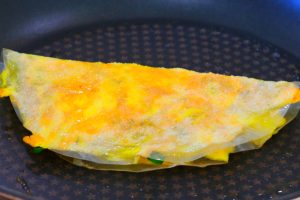
5-Min Rice Paper Omelet Recipe

Crispy Seaweed Rolls with Rice Paper

Chicken Lumpia Recipe

How to Make Potstickers (Pan-Fried Dumplings)

Follow CiCi on Gan Jing World!
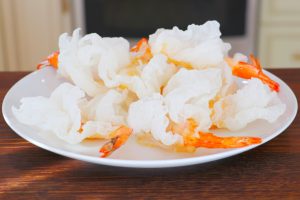
Crispy Shrimp Chips with Rice Paper

Chinese Braised Fish Recipe

Shrimp Cheung Fun with Rice Paper

The Surprising Truth About Shen Yun That Nobody Tells You

30-Min Char Siu Pork Recipe (No Oven Needed)

15-Min Steamed Garlic Shrimp Recipe

Sweet Chili Sauce Recipe

Steamed Spare Ribs with Black Bean Sauce (Dim Sum Recipe)

Chinese Chicken Feet Recipe

30-Min Soy Sauce Chicken Recipe (Cornish Hens)
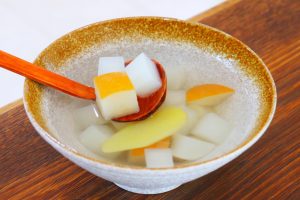
Chinese Secret Remedy to BEAT Cold and Flu!

Beef Chow Fun Recipe: Better Than Takeout!
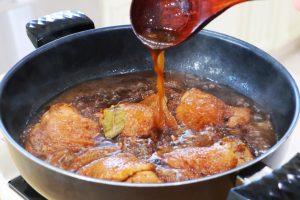
How to Make Filipino Chicken Adobo at Home
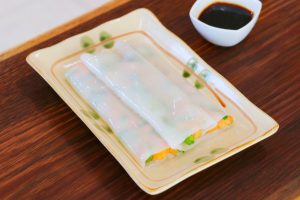
Dried Shrimp Cheung Fun Recipe

30 Min Teriyaki Chicken Recipe

Not the Shen Yun I Know by William Li

Shrimp Spring Rolls (Summer Rolls)

Chinese Smashed Cucumber Salad Recipe

8 Awesome Ways to Fold Dumplings at Home

Chinese Pork Dumplings with Dipping Sauce

Chinese Silky Steamed Eggs with Shrimp
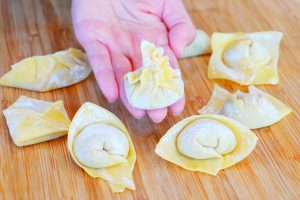
8 Amazing Ways to Fold Wontons at Home




12 thoughts on “Steamed Ma Lai Sponge Cake Recipe (Ma Lai Gao)”
Thanks very much i love it and will try it
Hi Joséphine,
Thank you for your support! 🙂
I love it, and thank you Cici Li
Hi Jovita,
Thank you for your support! 🙂
Super YUMMY!!! Tastes the same if not better as that of Tim Ho Wan’s
Thanks so much, Jow! I”m so glad that you enjoyed this recipe! 😀
Big thanks Ci Ci. I just made this cake using your recipe. Mine did not turn out as beautiful as yours as I did not have an 8″ round tray. But it was easy and yummy with a Q texture. Sweetness was just right too. Will be making many more of this. Thanks again
Hi Jesong,
Thank you for stopping by my website! I’m so glad that you enjoyed this this recipe. I hope to see you around, and happy cooking! 🙂
Could I reduce the amount of sugar or would it affect the final result significantly? Thanks
Hi Sam,
You could reduce the sugar. That’s totally fine. Happy cooking! 🙂
Instead of evaporated milk, does regular milk work?
Hi Susie, yes — you can replace it with regular milk. Happy cooking! 🙂